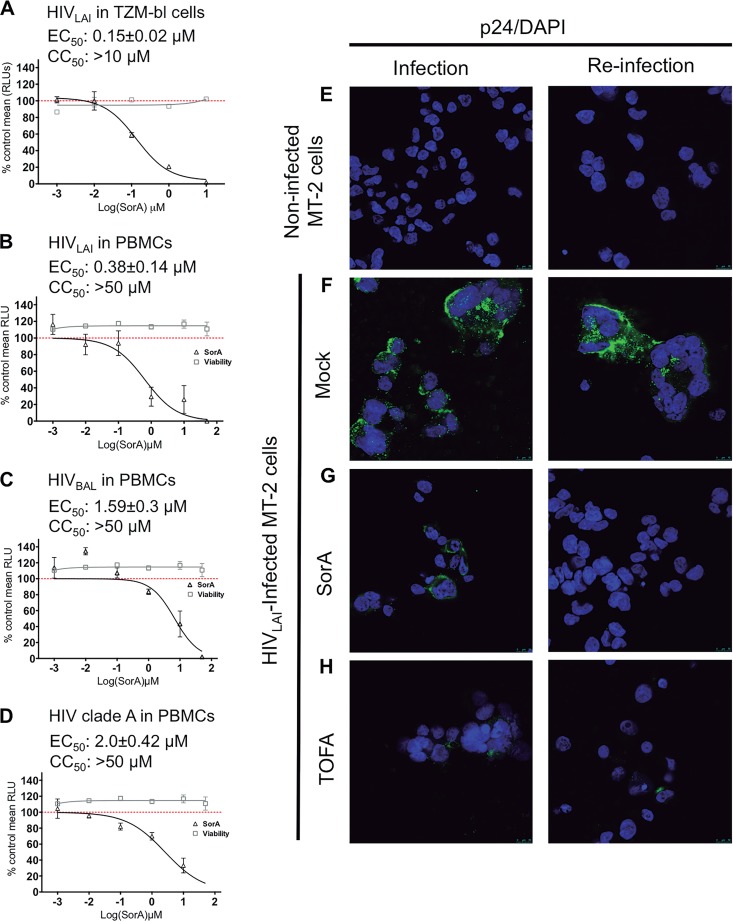FIG 1.
Soraphen A inhibits infectious HIV production. TZM-bl cells or PBMCs were seeded in 96-well plates and treated with increasing concentrations of SorA in triplicate. TZM-bl cells (A) or PBMCs (B to D) were infected with HIV-1LAI (A, n = 5; B, n = 4), HIV-1BaL (C; n = 5), or a primary isolate of HIV-1 KER2018 (D; n = 3) at a multiplicity of infection of 0.5. Supernatants were used to reinfect new TZM-bl cells. A representative curve is shown in every case. Infection (triangles) and cell viability (squares) are marked. The mean relative light units (RLU) are plotted as percentage relative to the DMSO control (vehicle). Error bars, standard error of the mean; CC50, 50% cytotoxic concentration. (E to H) MT-2 cells were spinoculated with HIVLAI and treated with SorA or TOFA as control. At 48 h after infection, supernatants were collected and used to infect new MT-2 cells, while cells were fixed and stained for HIV-p24 protein (green signals) and with 4′,6-diamidino-2-phenylindole (DAPI) (blue signals) (left panels). Newly infected MT-2 cells were then analyzed in the same manner (right panels). Noninfected MT-2 cells (E) and infected but untreated MT-2 cells (F) were used as negative and positive controls, respectively.

